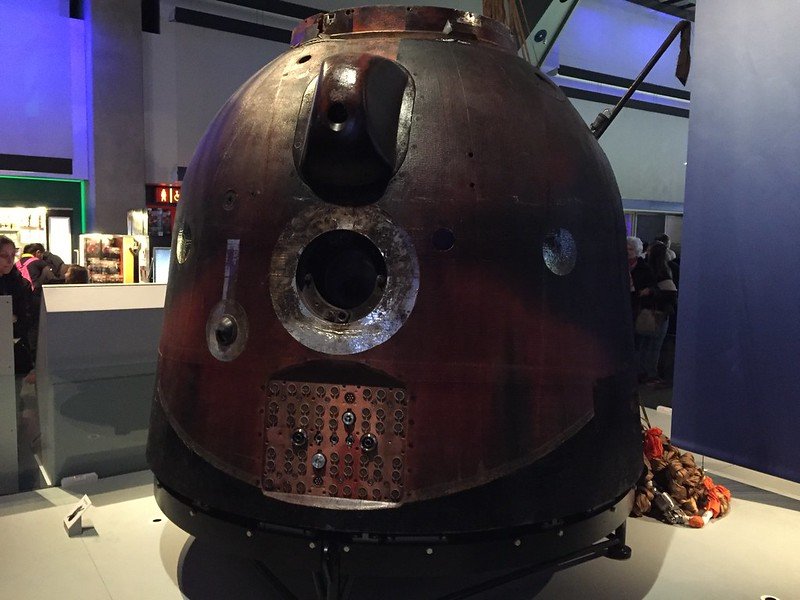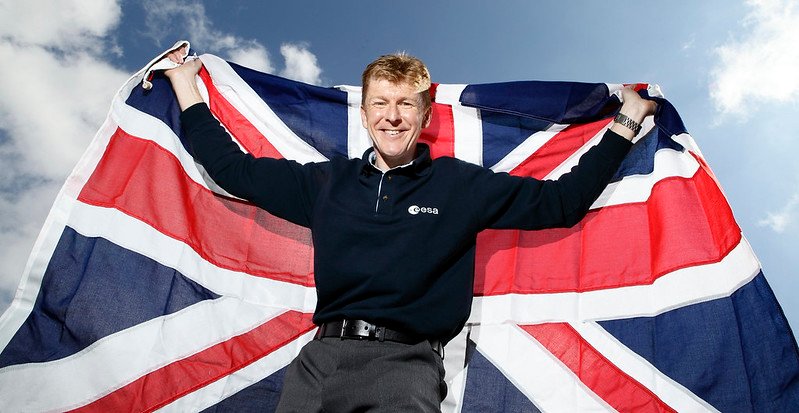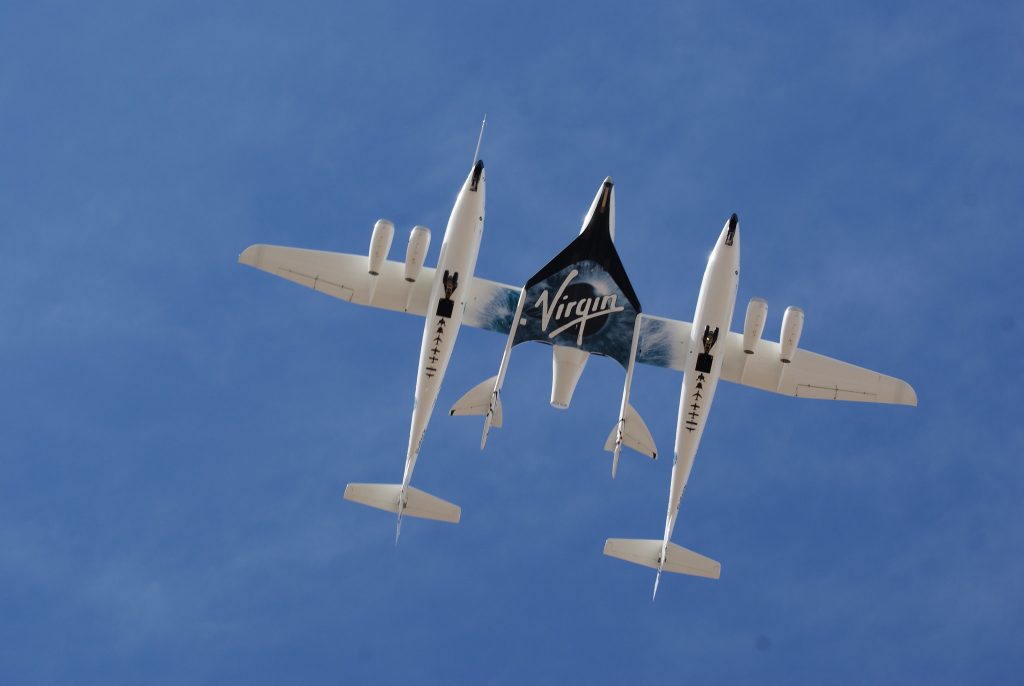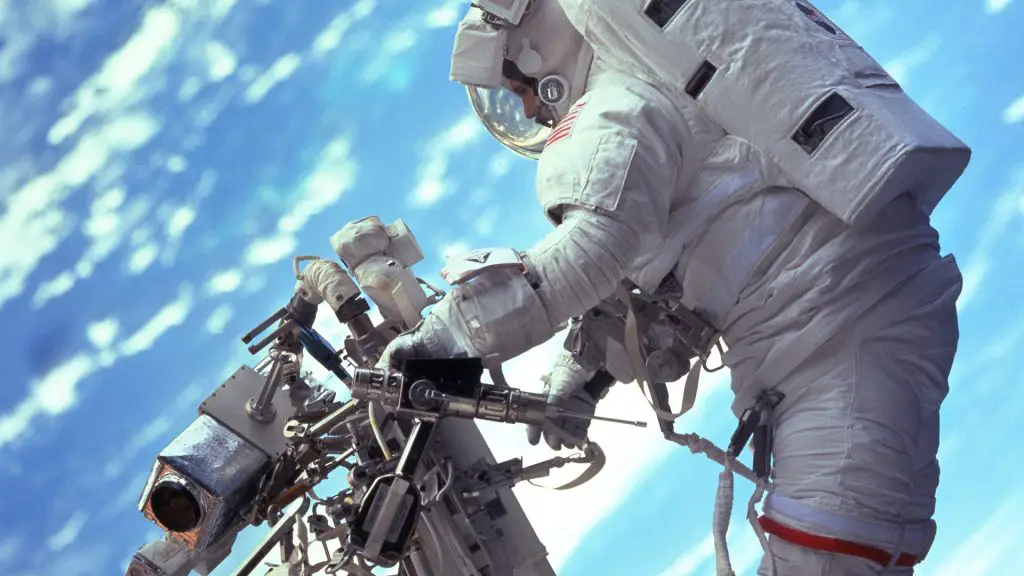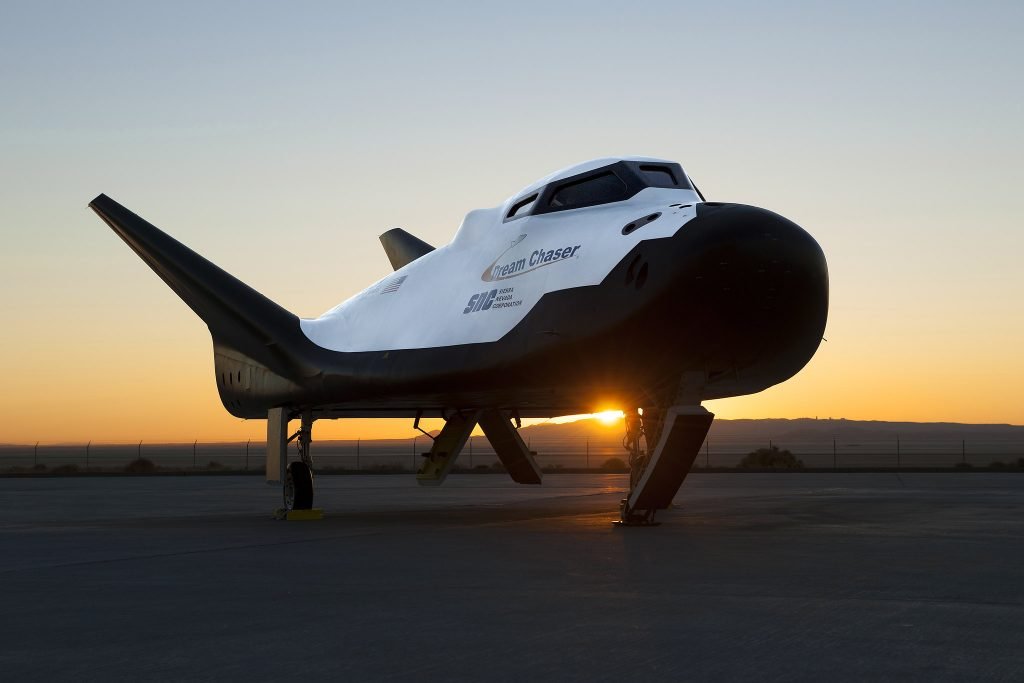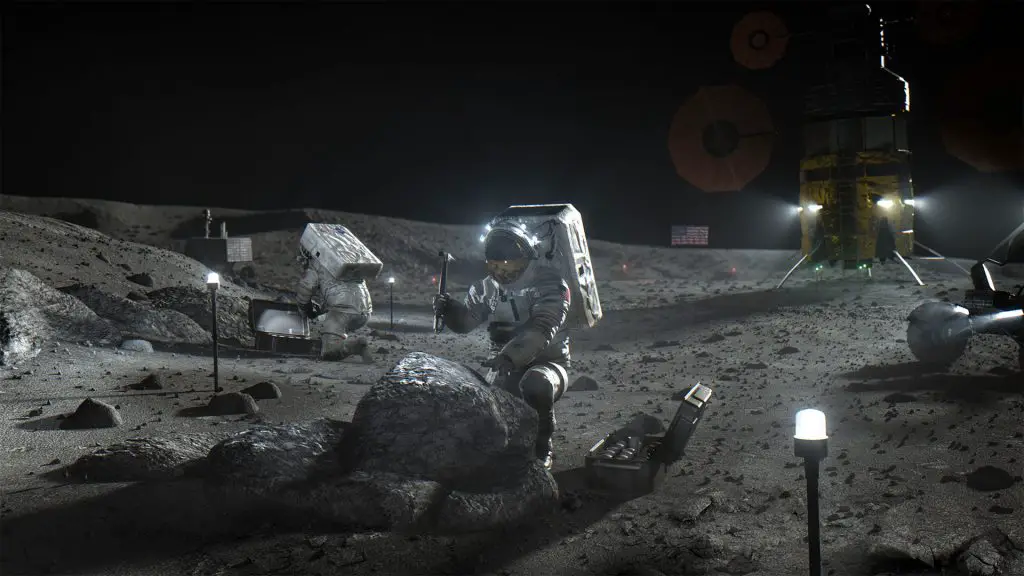Any links on this page that lead to products on Amazon and other companies may be affiliate links and we earn a commission if you make a qualifying purchase. Thanks in advance for your support!
Will Tim Peake fly into space again after stepping down from the European Space Agency (ESA) astronaut corps?
Although he announced a move to a purely ambassadorial STEM (Science Technology Engineering and Maths) for ESA and the UK Space Agency in January 2023, might Tim one day fly again privately into space as a follow-up to his 2015-16 “Principia” mission to the International Space Station (ISS)?
Looking at Tim’s flying and spaceflight career to date, Nick Spall considers the possibilities.
Based in the UK, Tim continues with his ongoing TV and radio media career, with regular contributions to the BBC’s “One Show”.In recent years, he has undertaken nationwide UK lecture tours, including the “My Journey to Space” tour in 2022-23 and the 2024-25 “Astronauts” tour, plus he presents inspirational public speaking talks. Tim was a guest on BBC Radio 4’s “Desert Island Discs”.
Any links on this page that lead to products on Amazon and other companies may be affiliate links and we earn a commission if you make a qualifying purchase. Thanks in advance for your support!
His website – www.timpeake.com – is enthralling for many, particularly young people, and in his latest book, Space: The Human Story, astronaut Tim Peake traces the lives of those remarkable men and women who have left the earth, from Yuri Gagarin to Neil Armstrong, from Valentina Tereshkova to Peggy Whitson.
Writing during the early Covid pandemic “lockdown-weeks” of 2020, Tim made good use of his flying, ESA astronaut selection and Expedition 46/47 diaries in “Limitless”. The autobiography follows Tim’s previous books, “Hello, is this planet Earth?: My View from the International Space Station” (2016), “Ask an Astronaut: My Guide to Life in Space” (2017) and “The Astronaut Selection Test Book: Do you Have What it Takes for Space?” (2018).
Producing four books in four years is challenging, particularly when he had heavy ESA astronaut responsibilities, plus being an active parent with two sons. In 2023 Tim wrote a further book “Space: the human story”.This covers many stories about the human and personal side of spaceflight, describing international astronaut training and mission experiences from the past 50 years, with all the excitement, wonder and occasional dangers that human space exploration involves.

Tim Peake’s biography
Becoming fifty-three in April 2025, Tim has already squeezed plenty into his life -helicopter flying for the UK Army Air Corps, aircraft flight testing, an ESA astronaut selection in 2008 and then his dynamic experiences during six-months onboard the ISS as part of Expedition 46/47 – a 3hr 43 minute EVA spacewalk in Jan. 2016 was perhaps his ultimate flying career experience.A future UK mission to the ISS onboard a Crew Dragon spacecraft now beckons.
Born on 7th April 1972 and raised in Westbourne Common, Sussex, Tim had a passion for helicopter flying from a very early age.
Always saying that his upbringing and education was “very ordinary”, in fact his enthusiasm for an outward bound life, including time in the Scouts and the Army Cadet Force at Chichester High School, meant that he was able to persevere enough to win a coveted Flying Scholarship and going solo in a Cessna 150 at Compton Abbas airfield at only eighteen years of age.
All his life he has excelled at all things outdoors and in the air, with Tim being inspire by being on Operation Raleigh after leaving school.
Rather than going to University straight after school, Tim joined the British army’s Sandhurst officer academy in 1990, going on to see active service in Northern Ireland, Bosnia, Kenya and Afghanistan, ending up as a Major by 2008.
He qualified as a helicopter pilot, instructor and then as a Boscombe Down EFTS test pilot, working on a number of aircraft in the UK and USA, but focussing mainly on the “Apache” attack helicopter for the UK army and the AgustaWestland manufacturers.
Tim has amassed over 3,500 flying hours , which is very high for helicopter flying. His aircraft testing days included deliberately flying into “vortex-ring bubbles” where helicopters can plummet out of the sky, deep-stalling an ancient WW2 Dakota DC-3, plus undertaking covert flying in Afghanistan in a Russian-built Mi-17 helicopter.
Mission Selection Origins
Applying as one of 8,000 across Europe, Tim was selected as an astronaut by ESA in 2009, despite the historic lack of UK involvement in human spaceflight (HSF). Since 2006 lobbying by the “UK Human Spaceflight Campaign” had begun to have a positive effect on government policy.Important discussions occurred between the enthusiastic UK Science Minister Lord Drayson and ESA’s DG Jean-Jacques Dordain in 2008/9 and a new UK commitment to HSF spending for the ISS freed matters up for Tim’s selection. The next Science Minister David Willetts sealed the process and committed UK HSF funding contributions, allowing for the six-month ISS mission for the UK’s Tim to go ahead.
Tim Peake would become the sixth member of the exclusive UK-born orbital astronaut “British Interplanetary Society’s (BIS) silver-pin award” group, joining Helen Sharman, Michael Foale, Piers Sellers, Nick Patrick and Richard Garriott de Cayeux.
Tim Peake’s spaceflight career
Being selected in 2009 by ESA as one of six new astronauts, Tim’s character and career profile obviously impressed his examiners.
Tim ticked all the boxes for astronaut selection criteria at that time – extensive test flying experience, a Degree in engineering gained at the relatively late age of thirty-three, a high level of physical fitness, the right attitude, motivation and team-player characteristics, plus he pursued appropriate hobbies and interests….. in Tim’s case these included parachuting, SCUBA diving, skiing and climbing,
By 2015 he was in space on a six month mission to the ISS . But Tim’s “Principia” mission was not all plain sailing.A thruster-sensor failure resulted in docking problems for his Soyuz TMA- 19M spacecraft, requiring Russian flight-commander Yuri Malenchenko to undertake a very difficult manual docking in darkness. Tim then had to cope with an infection that gave him a fever of 102 degrees early in the mission onboard the ISS, plus he had the difficult assigned task of capturing the visiting Dragon re-supply spacecraft with robotic arm controls.
Tim Peake spacesuit
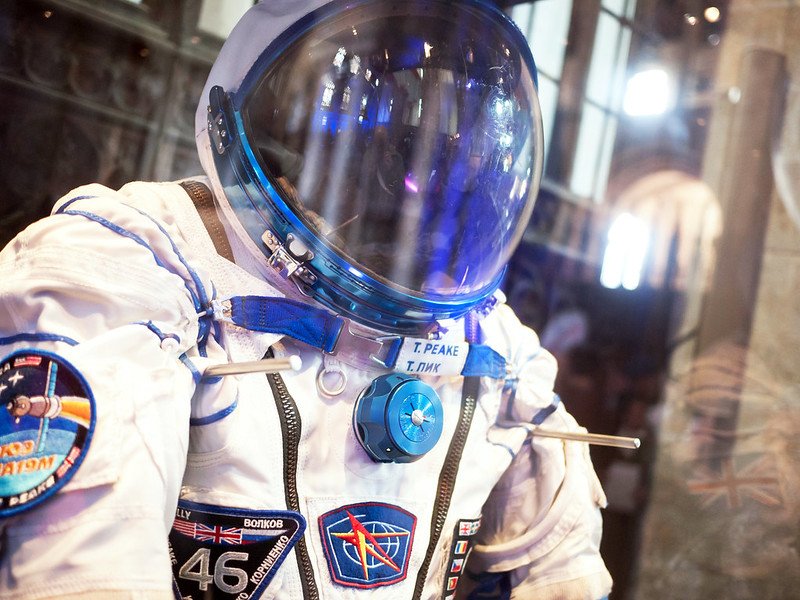
During Tim’s EVA, fellow spacewalker Tim Kopra’s helmet began filling with leaking EMU spacesuit coolant. Tim had to take-over as EVA-leader to speedily terminate the spacewalk and ensure both were safely back in the airlock before critical problems arose with the malfunctioning suit for his NASA colleague. Photo credit: Sam Town
Late in the mission, the Russian Progress cargo-vehicle attached to the station began leaking fluids. Window covers had to be closed for two weeks and the ISS became more like a sealed spacecraft.
All went successfully for Principia, however. Assisting with over 250 ongoing experiments on the ISS, plus the twenty-five experiments on his own body whilst in weightlessness, Tim’s science research output was very productive.
In public outreach terms “Principia” is now acknowledged as ESA’s most successful space missions.
Future astronaut possibilities
Tim’s future could involve spaceflight via emerging privately-led companies.
International human spaceflight via the private sector has been increasing its Earth orbit and sub-orbital activities in recent years, taking on experienced astronauts to test and crew new space vehicles.Virgin Galactic have used experienced test pilots and astronauts including Mark Stucky and the former veteran NASA space shuttle pilot Frederick Sturckow for their sub-orbital space tourism operations. UK-born former NASA astronaut Nick Patrick has acted as spacecraft-architect for Blue Origin’s “New Shepard” sub-orbital spacecraft.
Boeing Starliner’s future CST-100 spacecraft testing was planned to include former NASA astronaut Christopher Ferguson. Indeed in 2018 NASA named its first Commercial Crew “astronaut cadre” of four veteran astronauts to work with SpaceX and Boeing, including Robert Behnken, Eric Boe, Sunita Williams and Douglas Hurley.
The private company Axiom Space flew the Ax-1 mission to the ISS in April 2022 making use of ex-NASA shuttle and Soyuz astronaut Michael Lopez-Alegria as commander, then Ax-2 launched in May 2023, commanded by the highly experienced former NASA astronaut Peggy Whitson. Ax-3 followed in January 2024 with Ax-4 planned for 2025.
Other private missions are increasing.In September 2021 the “Inspiration4” private orbital mission occured. This first ever completely private “civilian” crew was funded and commanded by wealthy businessman Jared Isaacman. It consisted of himself as pilot-commander, plus two raffle winners and a physician assistant Hayley Arcenaux – she had been a former patient at the St. Judes Children’s Research Hospital. After just a few months training with SpaceX, these relatively ordinary people spent three days in orbit onboard a modified Crew Dragon spacecraft. Although suffering a little from mild space adaptation nausea, all went well and the mission showed that this part charity fundraising mission could be repeated using private astronauts/space participants from non-flying/military backgrounds.
Additionally, the SpaceX “Polaris Dawn” mission flew in 2023, commanded by former military test pilot Scott Poteet.
In addition to operations by private companies like Axiom, SpaceX and Boeing, potential for trained and experienced astronaut support must also exist via the emerging Human Spaceflight (HSF) nations such as the UAE and India.
At fifty-three, Tim has at least ten years ahead in terms of test flying and astronaut work potential. He has over 3,500 hours of military, instructional and test-flying in his log-books, via the Army Air Corps and Augusta Westland work. As a trained and experienced astronaut, considerable potential must therefore be out there for future private space activity if Tim was so inclined.
Indeed, a new possibility has arisen for Tim. In 2023 the UK Space Agency entered into an agreement with the Axiom spaceflight company to fly a future two-week all-British mission , with a crew of four astronauts in the Dragon spacecraft visiting the ISS. New privately-led research would occur during the mission and this would part-fund the project cost. Axiom have appointed Tim as an adviser to the mission and many expect that Tim Peake will command it as the lead pilot, with the other three UK astronaut crew possibilities being ESA’s Rosemary Coogan, Meganne Christian and John McFall.
Tim Peake – Quotes
For Tim, his childhood and early life has been a story of the “ordinary” British way of life producing an exceptional pilot and then an astronaut, combining the qualities of level-headedness and a good sense of humour .
His apparent modesty and down-to-earth nature clearly impressed his ESA selection team, his crewmates on his Principia mission plus the many who followed his subsequent STEM outreach work in recent years.

In his autobiography, speaking about having his children for example, he says:
“Did spaceflight change my perspective? Absolutely it did…..But did it change my perspective as much as becoming a father did? Not even close.”
Tim Peake
Few would not be impressed by this sober attitude to achievements in life
Fun Facts About Tim Peake:
- Tim spent 12 days as an “aquanaut”, living entirely under the sea as part of the NEEMO mission of NASA’s, where he had to use an “outdoor” underwater gazebo toilet
- He and his five fellow astronaut classmates from the ESA 2009 astronaut intake called themselves the “Shenanigans”
- Tim did the London Marathon running inside the ISS, weightless in space, in only 3hrs 35 mins.
- He orbited the Earth 2,627 times in his Principia mission in 2015/6
- Tim travelled into orbit on the Russian Soyuz rocket, reaching 25 times the speed of sound, becoming a member of the unofficial “Mach 25 Club”.
- Because of Einstein’s “relativity theorem”, travelling at 17,500mph for six months on the ISS, Tim is “relatively” younger than the rest of us….but only by approximately 0.03 secs.
- Onboard the ISS, Tim got to experience 16 sunrises and sunsets every day.
Interested in learning to fly a microlight? Check out this article, here.
